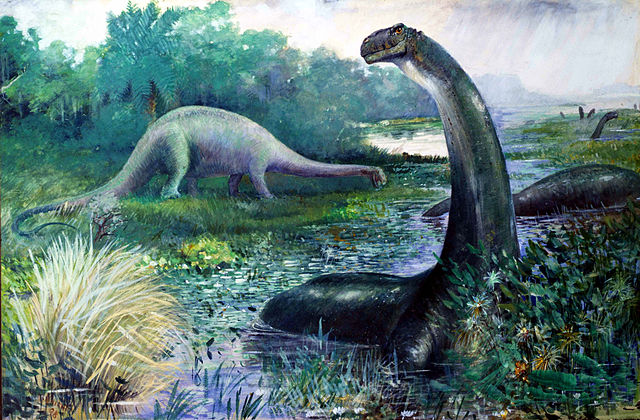
In 1919, a Belgian hunter saw with his own eyes a huge and mysterious creature in the heart of the jungle in the Congo.
Mr. Gapelle, a Belgian prospector and hunter, was in the wilderness when he noticed strange footprints on the ground. Astonished, he followed the trail for about 12 miles. After a while, he saw a huge beast. This animal had large scales and a very thick tail, similar to that of a kangaroo. He had a horn on his muzzle and a bump on his back.
Without hesitation, the hunter shot him. The beast then disappeared in the swamps.
According to many accounts, this creature could be a dinosaur of the order of the sauropods, which disappeared tens of millions of years ago.
The inhabitants of the region nickname this monster Mokélé-mbembé. He would live in the tributaries of the Congo River.
According to German adventurer Lt. Paul Gratz's account from 1911:
“The crocodile is found only in very isolated specimens in Lake Bangweulu, except in the mouths of the large rivers at the north. In the swamp lives the nsanga, much feared by the natives, a degenerate saurian which one might well confuse with the crocodile were it not that its skin has no scales and its toes are armed with claws. I did not succeed in shooting a nsanga, but on the island of Mbawala I came by some strips of its skin.”
Alfred Aloysius Smith, who had worked for a British trading company in what is now Gabon in the late 1800s, briefly mentions in his 1927 memoir the "jago-nini" and "amali":
“Aye, and behind the Cameroon there's things living we know nothing about. I could 'a' made books about many things. The Jago-Nini they say is still in the swamps and rivers. Giant diver it means. Comes out of the water and devours people. Old men'll tell you what their grandfathers saw but they still believe its there. Same as the Amali I've always taken it to be. I've seen the Amali's footprint. About the size of a good frying pan in circumference and three claws instead of five.”
Illustration of Brontosaurus in the water, par Charles R. Knight
- Forest Monster. Is it the Brontosaurus!, The Port Macquarie News and Hastings River Advocate, 13th December 1919
- Mokélé-mbembé



0 comments: